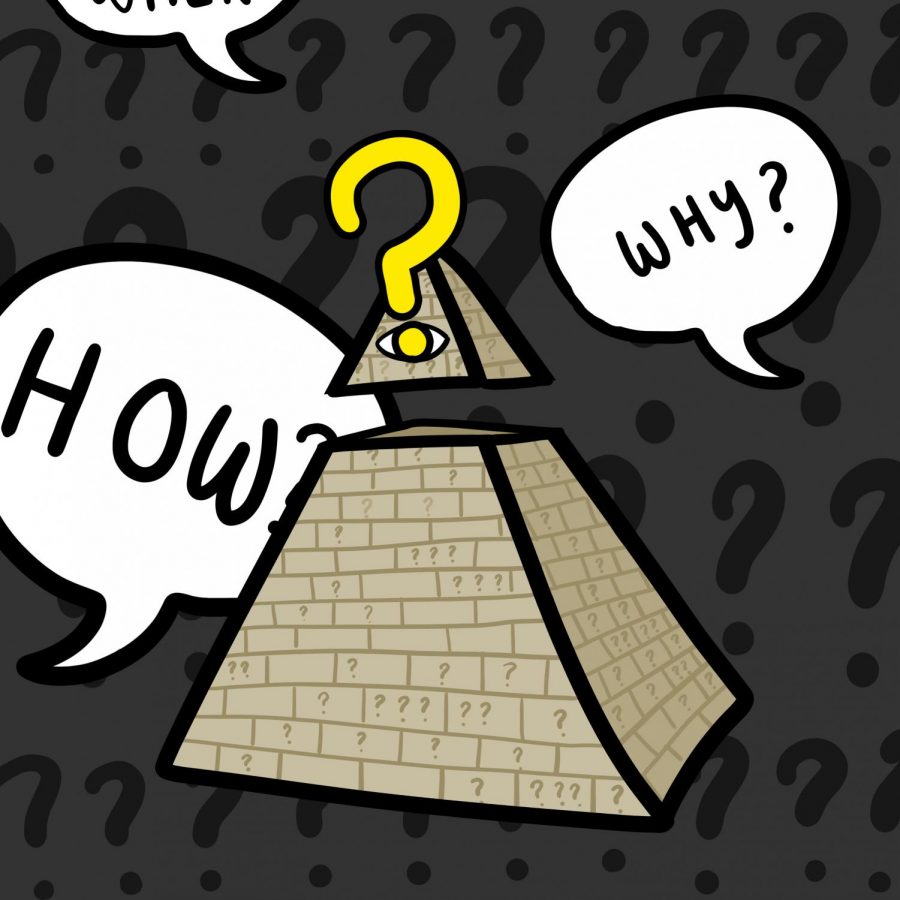Put Your Tin Foil Hats On, We Are Talking About Conspiracies
April 2, 2018
In a general spectrum, there are two types of theories in the world: good and bad. Good theories provide counterevidence and can be tested. Bad theories are ones that are non-falsifiable and non-testable. Many conspiracy theories fall into the latter category of theories, so the theories cannot be proved wrong due to lack in technology or lack of resources.
In CAS class “Underworlds: Subterranean Media and Theory,” Cinema Studies doctoral candidate and Adjunct Instructor at the Center for Experimental Humanities Leo Goldsmith addresses conspiracy theories.
“What is the difference between, say a conspiracy theory and a scientific theory, but one could also extend that to religion, myth or superstition,” Goldsmith said. “I’m not sure there are precisely definable boundaries — but to acknowledge that raises interesting questions about the role something like conspiratorial theorizing might play in contemporary life as something like a para-academic counterdiscourse.”
But what exactly are they and why do people believe in them?
In a Twitter rant, Robyn Pennacchia, a writer for Wonkette, mentioned in an interview with WSN through Twitter direct messages that one of the reasons people believe conspiracy theories is a need to feel intellectually superior to others.
Belief in conspiracy theories is often a "shortcut" to feeling smarter than the average bear (or sheeple, as the case may be). It's why smug phrases like "Do your own research!" are so popular in that community.
— Robyn Pennacchia (@RobynElyse) March 31, 2018
“Pieces of information are given out — sometimes a few that are true combined with a few that are super ridiculous, and then the reader/listener/etc. is encouraged to ‘connect the dots’ and ‘draw their own conclusions’ and ‘do their own research,” Pennacchia said. “This makes them feel respected in a way that they don’t get from journalists who are just telling them the facts.”
Conspiracy theories arise from a coincidental correlation and a concise narrative.
“A lot of people have trouble with adjusting for uncertainty or coincidence,” said Thomas Brambor, who is a lecturer at NYU Center for Data Science. “Whenever you see some kind of remote connection, I think people underestimate how much this kind of coincidence happens randomly, just by pure random chance.”
It is easy to connect unresolved sightings, symbols in ancient paintings — like “The Madonna with Saint Giovannino”, also known as the UFO painting — and the whispers of astronauts to conclude that alien life does exist. However, the evidence provided is occasionally just a biased selection of normal occurrences. It is almost like jamming the wrong puzzle piece in, because you can.
Humans are created in a way that makes them require structure. It is a necessity for survival and sanity. A study conducted in 2014 indicated that there was a relationship between a person’s need for structure and a tendency to believe in corporate conspiracy theories.
“We like to feel that we are in control of the narrative of our lives and our history,” Goldsmith said. “Conspiracy theories take this further, confusing the messiness of historical fact with the more comforting or more coherent wholeness of a story — a story with a point, or a moral or a resolution.”
Conspiracy theories can range from hobbies to alternative facts that governments use to get out of trouble by stamping the infamous “fake news” stamp on it. According to Brambor, it is a great get-out-of-jail card.
“Once you are in a position of influence and power and governmental responsibility, saying things about autism like the current president has done is just irresponsible,”Brambor said. “At that point, kids actually die if they don’t get vaccines.”
The bottom line is, theories are fun to discuss in a basement with the lights dimmed out after watching “ The X-Files.” It is, however, not okay to misinform a group of people by disregarding facts. There is no reason to completely disregard conspiracy theories. Some theories have already been proven, and with developments in technology, a pandora box full of proofs for conspiracy theories can open. Nothing in this world is absolute, including conspiracy theories. To end with Goldsmith’s words: “Sometimes, of course, they are a joke. The sordid delusions of Pizzagate, for example, deserve the most merciless mockery possible.”
Read more from the Washington Square News’ Conspiracy Feature. Email Yasmin Gulec at [email protected].

























































































































































